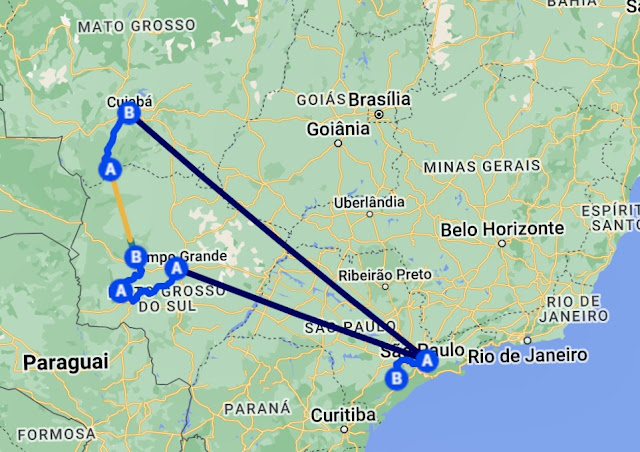(To see photos full screen, click on one and then scroll through them.)
Chapter Six
Horses and Rhinos?
That was pretty easy, and I wrote it while delousing my pet tapir.
—Greg Gutfeld
Had I been asked before this trip to liken the size of a South American tapir to any animal I knew, I would have guessed about the size of a large dog, say an Irish Setter or a German Shepard. An Irish Wolf Hound at the most.
Big pig-sized.
In my defense, tapirs don’t inhabit the forests of Alaska, so I never gave it much thought. Bears and moose, yes. Not tapirs.
All I had to go by were photos in books and I looked forward to the tapirs, giant anteaters, peccaries, giant river otters, caimans, and jaguars that were the animals we had good chances to see, according to the trip description. I figured we had 50/50 chances.
So, you can imagine my astonishment when a tapir showed up at Trilha dos Tucanos during dinner!
 |
| One day it will go up the steps and into the dining room if they aren't quick enough with the bananas, I bet. |
“It’s enormous!” I said out loud as I marveled at the sheer bulk of this usually shy animal that was contentedly eating bananas tossed to it by its human audience.
I didn’t get any photos that first visit because I had broken my cardinal rule of not going anywhere without a camera, even if it’s only my cell phone.
The next night I was prepared and it was even better! The tapir had brought her sub-adult daughter and people were hand-feeding them.
English-speakers pronounce their name “TAPE-er” or “TAA-per”. Brazilians says “tah-PEER” or call them by their name in Portuguese, "anta," which sounds a lot like “UN-tah.”
Regardless of whether you pronounce them tapir or tapeer, tapirs are related to the horse and rhinoceros, though looking at them you’d suspect a little elephant in their background. That’s because of their prehensile nose/lip that resembles a short trunk and is used for putting food in their mouth as well as breathing while underwater.
As for the rhinoceros background, the South American tapirs average six to eight feet in length, weigh between 330 and 710 lbs., and stand up to 43 inches at the shoulder. For comparison: German Shepard and Irish Setter males are 26 inches; an Irish Wolf Hound is 36 inches.
Imagine, an animal the size of a sheet of plywood, but with six or seven inches below the top.
As you can see from the videos, they love bananas. Tapirs are herbivores, eating mostly plants and fruits and scattering seeds in their scat. The average tapir can eat 75 lbs. of food per day.
They are hunted for their meat and as a result tapirs stay away from human settlements. It’s one reason why they are seldom seen. Because their chosen habitat is the thick rainforest, they are difficult to study, but sources say they are endangered.
These tapirs live between 25 and 30 years both in the wild and in zoos. Their predators, besides humans, are jaguars and crocodiles.
A raccoon ran in for its share of bananas, scaring the little tapir into the forest. I'd never seen a raccoon before, either.
The largest tapir is the Malaysian tapir, which has a plentiful population.
I was smitten. I wish all the tapirs in the world a long and healthy life.
After the tapirs left, I went out on the quiet deck of the lodge and recorded the night sounds of the rainforest.



















































